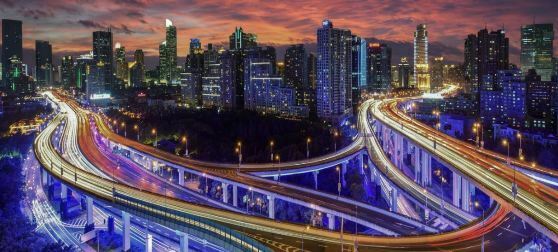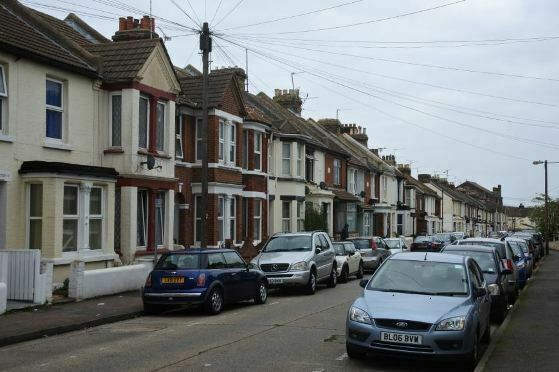
If only the world were not as it is. If only we could rebuild it.
Well, some are hoping to do just that. It was reported last week that Sidewalks Labs, the urban development company owned by Alphabet (Google’s parent company), is to build a model city – or at least part of a city – on the shoreline of Lake Ontario, on the eastern side of Toronto. The goal is to build for real the fantasy of so many futurologists, IT planners and data scientists – the smart city.
Sidewalk Toronto, according to its website:
… will combine forward-thinking urban design and new digital technology to create people-centred neighbourhoods that achieve precedent-setting levels of sustainability, affordability, mobility, and economic opportunity … It will be a place that embraces adaptable buildings and new construction methods to make housing and retail space more affordable. A place where people-centred street designs and a range of transportation options make getting around more affordable, safe, and convenient than the private car. A place that encourages innovation around energy, waste, and other environmental challenges to protect the planet. A place where public spaces welcome families to enjoy the outdoors all day and all night and where community ties are strong. A place that’s enhanced by digital technology and data, without giving up the privacy and security that everyone deserves.
So you know the sort of thing. Self-driving cars, bins that clean themselves, buildings that automatically adjust to the weather, fridges that tell you when you need fresh milk and order it for you. There will be heated pavements, floating parks and robotic ferries, in a Utopian vision in which the resident and the pedestrian come first, and everything is driven by data. It will be “the world’s first neighbourhood built from the internet up”, Sidewalk Labs have promised.

Also announced recently was Neom. This is the $500 billion ‘i-city’ envisaged by Crown Prince Mohammed bin Salman of Saudi Arabia as part of a grand vision to move the country away from its dependency on oil. Neom is envisaged as a 10,000-square mile megalopolis stretching across parts of Saudi Arabia, Jordan and Egypt (via a bridge). It will be solar powered, manned by robots, its food will be grown in vertical farms through hydroponics, it will have self-learning traffic systems. The place will be an open source platform designed for data scientists to build and develop further. The would-be city’s website promises:
NEOM is positioned to become an aspirational society that heralds the future of human civilization by offering its inhabitants an idyllic lifestyle set against a backdrop of a community founded on modern architecture, lush green spaces, quality of life, safety and technology in service of humanity paired with excellent economic opportunities.
There’s a lot more of this. There are the relatively long-established developments Songdo in South Korea, and Masdar City in Abu Dhabi. Excitable (but confident) visionaries in China and India are publishing grand plans for smart cities, both adapting existing cities to the new way of thinking and sketching out new ones. Amsterdam, Madrid, Stockholm and several others are already implementing smart innovations in areas such as traffic systems, rubbish collection and management of green spaces. Singapore is trialling self-driving cars and buses. At the British Library we are playing host to the Alan Turing Institute for the data sciences, part of whose vision is to help build the data-driven human environment of the future. The mountain range of data that is now generated by most of us, combined with the Internet of Things concept in which practically any object can be networked, then collect and share data, is building a brave new world around us.

Your city is dumb. The potholed streets, coin-operated parking meters, and drafty brick buildings many of us interact with every day haven’t changed much in a century. But it’s finally happening.
I was thinking about smart cities while I was walking along the back streets of Gillingham, a sadly drab north Kent town where the sky seems always to be grey. As I looked at street after street of late Victorian or Edwardian housing, all of it dismal yet functional – and above all occupied – I wondered when change will come to these areas and their inhabitants in this smart future.
Quite aside from a future world in which things are built around the data that people produce rather than the people themselves (if such a distinction will exist by then), what about the buildings we have now? The future urban environment is going to be designed in a new way, with homes, working places and leisure spaces built differently – new materials, new operating systems, new networks. But so many of us live in an urban environment that was constructed over 100 years ago. Are we going to continue to live physically in one century while interacting in the next? Will driverless cars stop outside Edwardian terrace houses, Amazon drones pass down streets first built when the only traffic was horse-drawn, and the new technological society come to two-up, two-down homes built of brick? Psychogeographers such as Patrick Keiller in his ‘London’ films have long highlighted the peculiar disconnect between the urban world that we are sold and the inherited urban spaces that many of us continue to occupy. We live and think in different realities. Now this social dissonance is set to grow exponentially.
It is hard to imagine, but what is the alternative? Will we flatten all our pre-21st century housing and build new energy-efficient, data-driven, wholly networked homes that will enable us to function fully in the new society? How much will that cost? Surely an impossible amount. Might we abandon such towns and build from scratch elsewhere? And if so, where? (if you were going to rebuild Gillingham, would you want to do it in Gillingham?) And what then will happen to these abandoned towns? Will we let nature reclaim them, weeds cracking open the tarmac, trees sprouting through roofs?
Or will we have a combination of both: new cities and towns being built, while a digitally-poor underclass remains in anachronistic urban spaces?
I suspect that it will be the latter. We will build these digital Utopias, to which those who have the money and skills will move, while those left behind will continue to live in Gillinghams. Those latter inhabitants won’t be entirely disenfranchised, because they will be buying the products and sharing in the services. But they will remain the underclass, because they will be caught in a cycle of being unable fully to engage and therefore being forced into exclusion. Of course, it has always been the case that wealth and opportunity centre on the city. But the scale of reinvention promised by visions of an urban environment driven by a digital infrastructure rather than the inherited physical one is going to increase the difference to a scarcely imaginable degree.
Some of us will be fully functioning digital citizens. The rest will be trapped in an absurdity.